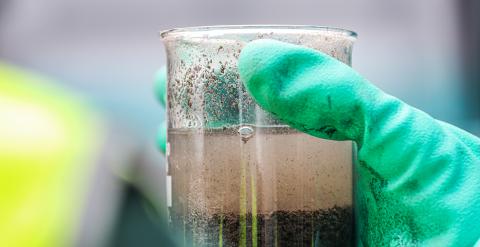They are used in firefighting foams, protective coatings, films, and consumer products like stain-resistant garments and carpets. After decades of widespread use, PFAS are ubiquitous - they are in things you touch, eat, and breathe. Studies have shown negative health outcomes with low levels of chronic exposure.
During the works at a large public infrastructure project, high concentrations of PFAS were detected in soil and groundwater at various locations. In order to avoid human and environmental exposure, Jan De Nul's environmental department came up with a prompt solution to tackle these forever chemicals, both in groundwater and soil, at the construction site and beyond.
The groundwater, which is extracted during the erection of fundamental infrastructure works, is continuously remediated by our groundwater treatment or purification plants. These are specifically designed to remove harmful PFAS concentrations from the drainage water at site. We are furthermore applying specific pump & treat methods to create hydraulic barriers between sites, hereby avoiding polluted groundwater to spread.
Besides groundwater, PFAS concentrations in soils seemed to be alarmingly high at some locations. Jan De Nul group came up with a large-scale remediation strategy for PFAS removal from soils, which was subsequently executed according to plan.
The most contaminated soils can be treated on the spot, in our mobile soil wash treatment plant or can be shipped over the waterway towards our valorisation centres, where a soil washing installation is both using physical and chemical processes to thoroughly clean the fractions.
The water used during the cleaning process is guided towards a water purification plant, where PFAS is extracted before the water is reused within the soil wash plant. The cleaned soil is shipped back to the construction site, where it is usefully applied.
The total setup proved to be efficient, both in terms of PFAS removal and cost. Jan De Nul Group delivered a total solution to an imminent environmental issue, while maximizing the re-use of materials and minimizing the CO2 footprint.

